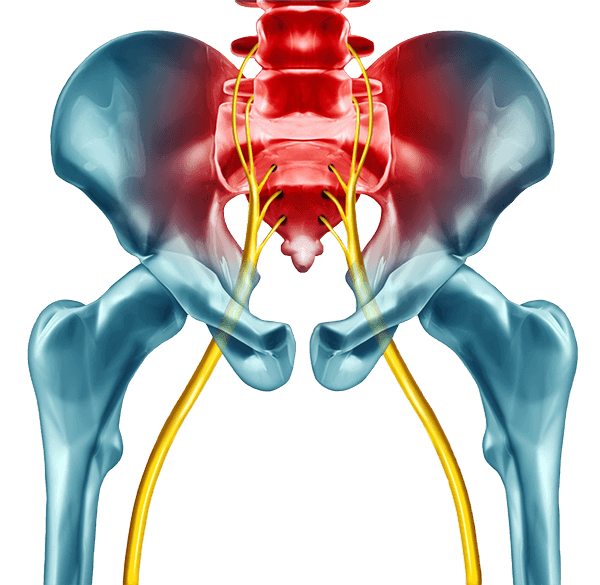The term sciatica refers to the pinching of the sciatic nerve somewhere along its pathway. Sciatica is characterized by pain that radiates from the lower back down the buttock and leg, typically only on one side. Pain can range from mild to severe and may be accompanied by muscle weakness and tingling, which makes doing daily activities difficult. Since sciatica is generally a symptom of an underlying condition that causes the nerve compression, such as a herniated disc or spinal stenosis, it’s a good idea to schedule a consultation with a spine specialist like Dr. Daniel Choi.

Anatomy of the Sciatic Nerve
The sciatic nerve is the longest and largest nerve in the human body. It originates in the lumbar spine (lower back) and branches out, running behind the hip joint, through the buttocks and down the back of both legs, ending at each foot. It serves to connect the spinal cord to the legs and feet and is responsible for providing both sensation and mobility to the lower extremities. Because of its complexity and size, compression of the sciatic nerve, or sciatica, can lead to debilitating pain and other symptoms.
What causes Sciatica?
Sciatica Symptoms
In most cases, sciatica occurs on only one side of the body, however, it is possible for it to affect both legs simultaneously. Symptoms include:
- Pain that radiates down the buttock and back of one leg
- Tingling or numbness in the affected leg
- An aching, burning or sharp sensation that can range from mild to excruciating
- One-sided muscle weakness
Causes of Sciatica
Sciatica is caused by a compressed, or pinched, sciatic nerve. This can be due to:
- Spinal stenosis
- A herniated disc
- Bone spurs
- Trauma
- Damage from diabetes
- A tumor (rare)
- Pregnancy


How is Sciatica Diagnosed?
Discussion With Dr. Choi
Our Long Island spine expert, Dr. Choi, will start your consultation by discussing your symptoms and health history. Sciatica is a symptom itself, so the aim is to diagnose the cause of your sciatica.
Exam
Next, Dr Choi will perform a physical examination. During the exam, he’ll test your reflexes and evaluate which movements trigger your pain.
Imaging Tests
If Dr. Choi believes a bone spur or herniated disc is behind your sciatica, he’ll order an x-ray. Depending on your situation, he may also recommend a CT scan or MRI to get a detailed picture of the soft tissues in the area.

Sciatica Treatment
At Spine Medicine & Surgery of Long Island, our goal is to treat sciatica using non-invasive or minimally invasive techniques. Dr. Choi only recommends spine surgery as a last resort. Your treatment will likely involve a personalized combination of several approaches and could include:
- Physical therapy
- Medication (i.e., anti-inflammatory medications, muscle relaxants and/or pain medication)
- Steroid injections
- Short-term rest
- Alternative treatments, such as acupuncture
- Chiropractic care
- Surgery to eliminate the nerve compression
Less Pain, More Living
Find out how we can help you achieve freedom from pain. To get started, schedule a consultation with our Long Island spine surgeon today!



